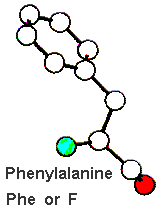
Two scales are needed, one for the transfer of unfolded chains from water to bilayer interface and one for the transfer of folded chains into the hydrocarbon interior. The hydrophobic or hydrophilic character of a compound or amino acid is sometimes called its hydropathic character, hydropathicity, or even “hydropathy” (which originally meant the therapeutic use of water). Hydrophobicity scales are routinely applied to the recognition of TM α-helices by averaging over a window and by searching for hydrophobic stretches at least 15 residues long. The different types of amino acids are hydrophobic, hydrophilic, polar and nonpolar.Each of these types of amino acids play their own unique role in the development of muscle and tissue. A hydrophobicity profile is a plot of the residue number versus residue hydrophobicity, averaged over a running window. The building blocks of proteins are amino acids and there are a number of classifications or types of this essential acid. When consecutively measuring amino acids of a protein, changes in value indicate attraction of specific protein regions towards the hydrophobic region inside the lipid bilayer. Hydrophobicity profiles have been used to predict the location of turns in proteins.
Hydrophobic amino acids free#
These scales are commonly used to predict the transmembrane alpha-helices of membrane proteins. Hydrophobic selectivity is defined as the amount of free hydrophobic amino acids: phenylalanine, leucine, isoleucine, tyrosine, tryptophan, valine, methionine, and proline (Black and Mould 1991), relative to the total liberated free amino acids on molar-base. An inverted hydrophobicity scale corresponds to a hydrophobicity scale in which values are multiplied by 1.Ībout a dozen different scales of hydrophilicity or hydrophobicity have been derived from measurements of partition coefficients of amino acids between two noninteracting isotropic phases as well as by several other methods. The more positive the value, the more hydrophobic are the amino acids located in that region of the protein. This list is provided as a study guide to help remind you of the properties of the side chains/R-groups of the twenty amino acids which. In hydrophobicity scales, the more hydrophobic amino acids have the highest positive values while the more hydrophilic ones have the highest negative values. There are only five atoms that will appear in your amino acid variable groups: H, C, N, O, and S.Hydrophobicity scales are values that define the relative hydrophobicity or hydrophilicity of amino acid residues. The lack of polarity means they have no way to interact with highly polar water molecules, making them water fearing. Hydrophobic amino acids have little or no polarity in their side chains. How do you know if an amino acid is hydrophobic? However, when amino acids are incorporated into peptide chains, they no longer have amino and carboxy groups, so they’re characterized on the basis of their si. They all have amino groups and carboxylic acid groups and exist as zwitterions. Polar amino acid residues have a tendency to be on the outside of a protein, due to the hydrophilic properties of the side chain. Answer: Which amino acids are hydrophilic All of them. Are all polar amino acids hydrophilic?Īll polar amino acids have either an OH or NH2 group (when in aqueous environment), and can therefore make hydrogen bonds with other suitable groups. Where are hydrophilic amino acids found?īecause the charged and polar amino acids are hydrophilic, they are usually found at the surface of a water-soluble protein, where they not only contribute to the solubility of the protein in water but also form binding sites for charged molecules.


The hydrophobic amino acids include alanine (Ala, A), valine (Val, V), leucine (Leu, L), isoleucine (Ile, I), proline (Pro, P), phenylalanine (Phe, F) and cysteine (Cys). For discussion of OH−π, and CH−O types of hydrogen bonds see Scheiner et al., 2002.


 0 kommentar(er)
0 kommentar(er)
